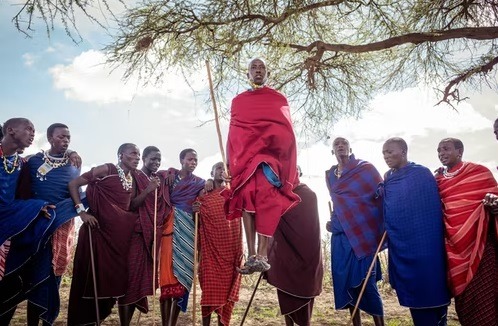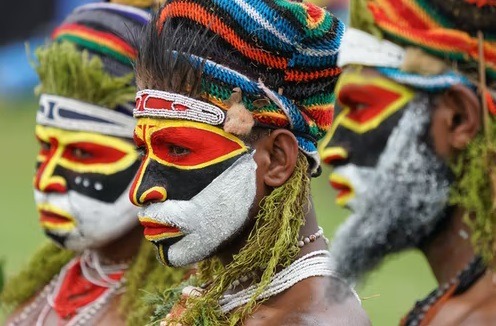Indigenous people known as the Erie lived in the past on Lake Erie’s southern side. Before 1658, an Iroquoian tribe inhabited what is now western New York, northwest Pennsylvania, and northern Ohio. Their nation was destroyed in the middle of the 17th century by five years of protracted conflict with the powerful Iroquois tribes who lived nearby after they aided the Huron in their battle for control of the beaver trade. Furthermore, get to know other famous historic events in New York.
To teach a lesson to those who dared to defy the Iroquois, their towns were set on fire. This led to the destruction of their maize and other food reserves, increased the number of fatalities, and jeopardized their future because they had no way to survive the winter. They most likely had to leave because of the attacks. Captives and refugees were welcomed into the tribes of the Iroquois League. Many Iroquoian tribes, particularly the Seneca, the westernmost of the Five Nations, are thought to have assimilated the remaining Erie. Due to the tribes’ mutual use of the hunting areas on the Allegheny Plateau and the Amerindian trails that crossed through the Allegheny gaps, certain Susquehannock families may have also adopted some Erie. People from the last remaining tribes who coexisted with the Iroquois eventually lost their distinct tribal identities as they melded with the mainstream cultures.
The Erie was sometimes referred to as the “Long Tail” or “Chat” (referring, possibly, to the raccoon tails worn on clothing or the Eastern Panther which played a role in Erie cosmology). They lived in palisaded towns with multiple-family long homes, like other Iroquoian tribes. These defensive constructions frequently encircled their agricultural areas. During the warm season, they raised the “Three Sisters”: different kinds of corn, beans, and squash. Tribal members relied on the stored crops and game from their hunts to survive the winter.
The Erie’s Official Name
In the Jesuit Relations of 1610-1791 and in associated New France papers from the time, including maps, the Erieronon, to use the Huron suffix, or Eriehaga, to use the Iroquois suffix, are referred to by a wide range of names. Rigueronnon, Riquehronnon, Erieckrenois, and Eriegoneckkak are further variations of the name of the dominant tribe of the confederacy, which the Virginian trader among the Massawomeck, Edward Fleet, corrupted as Hereckeenes. Other variations include Enrielhonan, Rhiierrhonnon, and Enrie.
The Huron and other languages used to refer to them as “people of the long-tails” have been translated into French as “Nation du Chat” or “Nation des Chats,” yet there is strong evidence to support both the cougar and raccoon interpretations of this name.
The Huron called them by their true name, the Yenresh, which is Yenreshronon with the suffix, which means “long-tailed” or “long-tailed people.” They were known as Kenyrak by the Tuscarora. Perhaps similar is the Onondaga word for raccoon, “tsho-eragak.” They were known as the Gwageoneh by the Seneca, who was among the Five Nations’ closest physical neighbors. They were known as the Arrigahaga, or “people of Arrigha,” by the Mohawk. The Iroquois of the Five (later Six) Nations also referred to them collectively as “Otkons,” or “evil spirits.”
The Erie Tribe’s History
A strong tribe, the Erie tribe spoke the same language as the other tribes that made up the Iroquois Confederacy. They probably had a friendly rivalry with the other tribes for the many years that they shared a border, but nothing particularly violent ever happened.
Famous explorers who were venturing into North America’s interior encountered many Northeastern tribes, sparking the start of the successful fur trade. Because of this trade’s importance to the economies of both Europeans and Native Americans, longstanding rivalries rapidly erupted into competition for control of the market. It is also where the history of New York stands today.
Early in the 17th century, violence to control the fur-bearing provinces, the start of the protracted Beaver Wars, erupted, disrupting the usual peace and trade between the tribes, who had overhunted some areas in response to the demand for beaver and other furs.
The Erie Confederacy’s Way of Life
The western Iroquois tribes and confederacies, including the Huron, Petun, Chonnonton, Wenro, and maybe the Chondake and Massawomeck, shared many characteristics with the Erie. The Black Robes’ claims that the Erie spoke a language that was exactly like that of the Huron and Petun, along with the fact that the Huron did not refer to them as Attawandaron like they did Chonnonton and the Massawomeck, indicate that their dialect was fundamentally Huron.
The Erie Tribe’s Devastation
The Iroquois Confederacy, a major force in the Northeast, sought to regulate the fur trade. They launched an attack right away, destroying numerous Huron Tribe villages. As a result, a large number of refugees fled the settlements and were received by nearby tribes. The Iroquois were enraged at the Erie tribe’s acceptance of most of the immigrants, so they launched an assault. The Erie had fewer weapons than the Iroquois, which gave them an advantage in battle. The Erie did well in the first year of a five-year battle after launching a proactive assault on the western Iroquois tribes in 1653.
However, as a result of their triumph, the entire Confederacy went to war with Erie. The Erie Confederacy, the Neutrals, and the Tobacco were thus annihilated throughout a five-year conflict, with the tribes remaining only as fragments. Midway through the 1650s, the Erie tribe had split apart. Dispersed groups, particularly the westernmost Seneca tribe, endured for a few more decades until being assimilated into the Iroquois.
It is hypothesized that some Erie migrated to South Carolina, where they were known as the West, after first going to Virginia, where they were known as Rechahecrian. Some allegedly made their way to Canada. Later, people from other tribes claimed to be descendants of this extinct culture’s refugees who intermarried with other groups. The Erie had limited direct interaction with Europeans since they were farthest from the coastal regions of early European exploration. They were only mentioned in historical records by Jesuit missionaries in Canada and Dutch fur traders from Fort Orange. During the Beaver Wars, the Jesuits learned more about them, but aside from one in-person contact, the majority of what they learned came from the Huron, who suffered a significant decrease before the Erie.


